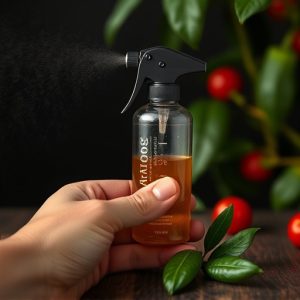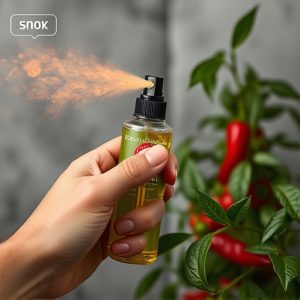Optimizing Law Enforcement with Pepper Shot Pepper Spray: A Guide to Use, Training, and Legal Implications
Pepper Shot pepper spray is a non-lethal tool used by law enforcement for managing aggressive or th…….
Pepper Shot pepper spray is a non-lethal tool used by law enforcement for managing aggressive or threatening individuals, providing a high concentration of capsaicinoids to induce immediate pain compliance without causing lasting harm. Its precision-engineered design allows officers to adjust the spray distance according to situational demands. Training is paramount for effective and safe use, ensuring that officers can employ Pepper Shot appropriately in various scenarios, maintaining public safety while minimizing injury or conflict escalation. Recognized for its potency and accuracy, with a projection range of up to 18 feet, the spray delivers a dense mist containing OC microparticles that affect subjects' eyes, skin, and respiratory system, leading to rapid compliance. Its persistent cloud lasts up to 30 minutes, beneficial for controlling resistant or intoxicated individuals. Pepper Shot's effectiveness is highlighted by its adherence to safety protocols when used correctly. Law enforcement must use it judiciously within legal frameworks and departmental policies, with rigorous training ensuring the tool is applied effectively under dynamic conditions. Regular training and recertification are essential for maintaining proficiency in its use. The responsible deployment of Pepper Shot pepper spray, governed by strict regulations, is crucial for upholding public safety and officer protection, requiring officers to exercise sound judgment and adhere to established protocols while considering environmental factors and bystander safety. Post-deployment procedures involve medical evaluations, debriefings, and feedback loops to improve future responses, emphasizing the importance of Pepper Shot as a key non-lethal tool in law enforcement's crowd management strategies.
law enforcement, pepper shot pepper spray, crowd management, training, legal implications, real-world deployment
Pepper shot pepper spray has emerged as a critical non-lethal tool in modern law enforcement arsenals. This article delves into the intricacies of pepper shot, exploring its mechanisms, effectiveness, and integration into crowd control strategies. We will guide law enforcement professionals through the nuances of using this potent self-defense mechanism, highlighting essential training and procedural considerations. Furthermore, we will navigate the complex legal landscape surrounding its deployment, ensuring that best practices are followed to effectively manage real-world situations while maintaining accountability and safety for both officers and civilians.
Understanding Pepper Shot Pepper Spray: A Comprehensive Guide for Law Enforcement
Pepper Shot pepper spray stands out as a pivotal tool in law enforcement’s arsenal, offering a non-lethal means to subdue and control combative or threatening individuals. Its formulation is meticulously designed to deliver an effective dose of capsaicinoids, the active component responsible for inducing intense irritation upon contact with mucous membranes and skin. This powerful deterrent is engineered to incapacitate assailants by triggering pain responses that are overwhelming yet temporary, ensuring compliance without causing permanent injury or fatality.
For officers on the frontlines, understanding the nuances of Pepper Shot pepper spray is crucial for its optimal deployment. The device’s unique design delivers a concentrated and targeted stream, which can be adjusted to achieve different ranges—from close up to a distance. This feature allows law enforcement professionals to respond with appropriate force according to the situation’s severity, ensuring public safety while minimizing the use of force. Training in its deployment is essential for officers, as proficiency with Pepper Shot pepper spray contributes to its effectiveness and reliability in real-world scenarios. It is a tool that demands respect for its power and precision; when used correctly, it can significantly reduce the risk of harm to both officers and civilians during confrontations.
The Mechanism and Effectiveness of Pepper Shot in Crowd Management Scenarios
Pepper Shot pepper spray stands as a robust tool for law enforcement officers in managing large crowds effectively. This advanced formulation delivers an impressive cloud of OC (Oleoresin Capsicum) spray at a range of up to 18 feet, offering a strategic non-lethal alternative during confrontations. The mechanism behind Pepper Shot is its ability to project a fine mist composed of millions of microparticles that can quickly disperse and engulf subjects within a matter of seconds. This dense fog incapacitates by causing intense irritation to the eyes, skin, and respiratory system, prompting rapid compliance without the need for physical force.
The effectiveness of Pepper Shot in crowd management is multifaceted. It is specifically designed to react with the moisture in the air, creating a persistent spray cloud that can linger for up to 30 minutes. This prolonged incapacitating effect is crucial in scenarios where subjects are resistant or under the influence of substances. The OC compound used in Pepper Shot has a concentration that is both potent enough to induce compliance and safe for use by officers, provided proper training and protocols are followed. The spray’s accuracy and range allow for a controlled response, minimizing the risk of collateral exposure to bystanders or officers themselves. This selective incapacitant effect is particularly valuable in maintaining public safety while managing aggressive or combative individuals within a crowd.
Training and Procedural Considerations for Law Enforcement Using Pepper Shot Pepper Spray
Law enforcement agencies integrate Pepper Shot pepper spray as a less-lethal tool to manage confrontations and de-escalate potentially violent situations. Training for officers using Pepper Shot pepper spray is paramount, encompassing both the technical handling of the device and scenario-based decision-making exercises. Officers must familiarize themselves with the spray’s mechanisms, including how to accurately aim and deploy it effectively at varying distances. Procedural considerations extend beyond physical handling; they include understanding the physiological effects pepper spray induces in subjects, such as temporary blindness, coughing, and difficulty breathing, which can facilitate compliance without the need for more forceful measures.
Furthermore, officers must be trained on the judicious use of Pepper Shot pepper spray, ensuring its application aligns with departmental policies and legal standards. This includes recognizing appropriate scenarios where its use is justified, as well as understanding the potential collateral effects on bystanders and the environment. Continuous training and periodic recertification are essential to maintain proficiency and ensure that officers can reliably employ this tool during dynamic, real-world encounters. By prioritizing comprehensive training and adhering to established protocols, law enforcement can effectively utilize Pepper Shot pepper spray as part of a broader strategy to protect both the public and themselves.
Legal Implications and Best Practices for Deploying Pepper Shot in Real-World Situations
Law enforcement agencies must navigate a complex legal landscape when deploying Pepper Shot pepper spray, a non-lethal incapacitant used to control or detain potentially dangerous individuals. The legality of using such sprays varies by jurisdiction and is subject to strict regulations that govern the use of force. Officers are trained to use Pepper Shot only when there is an imminent threat of harm, as a deterrent to prevent escalation of violence, or to protect themselves or others. The legal implications extend beyond the immediate application; they include training requirements, procedural justifications for deployment, and after-incident reporting. Ensuring that officers have received comprehensive training in the use of Pepper Shot is crucial, as it can lead to misuse or overuse if not applied judiciously. Best practices dictate that such sprays should be used as a last resort when less forceful options are insufficient to maintain safety and order. Officers must document each instance of deployment thoroughly, adhering to departmental policies and legal standards to ensure accountability and transparency. Additionally, ongoing assessment of the situations where Pepper Shot is deployed helps law enforcement agencies refine their best practices and training programs, ensuring that officers are prepared to use this tool effectively and within the bounds of the law.
In real-world situations, the effective deployment of Pepper Shot pepper spray requires a combination of situational awareness, sound judgment, and adherence to departmental protocols. Officers must consider factors such as the environment, the proximity to bystanders, weather conditions, and the subject’s physical and mental state. Best practices for deploying Pepper Shot involve calculating the trajectory to minimize risks to innocent parties, verbalizing clear commands to de-escalate the situation before resorting to its use, and employing it in a manner that is least injurious yet still effective in neutralizing a threat. Post-deployment procedures are equally important, as they involve medical evaluations of both the subject and the officer, debriefings to analyze the event, and continuous feedback to improve future responses. These comprehensive measures underscore the importance of responsible use and reinforce the role of Pepper Shot pepper spray as a tool for law enforcement to protect public safety.


